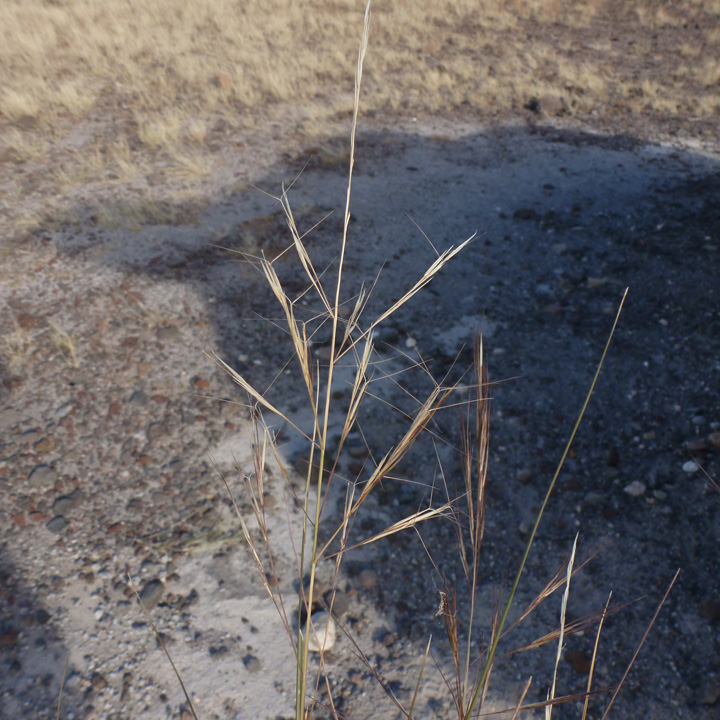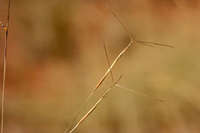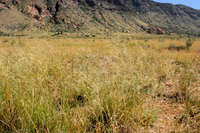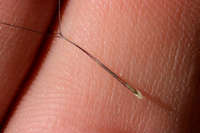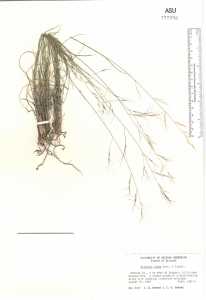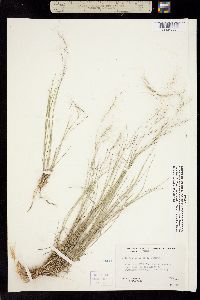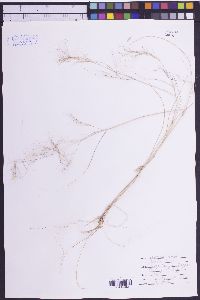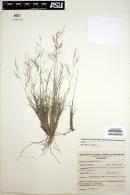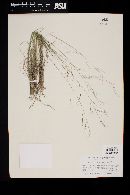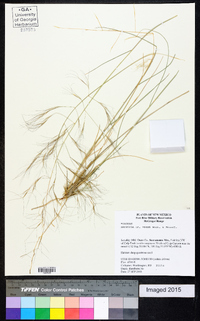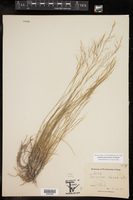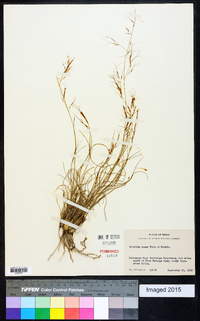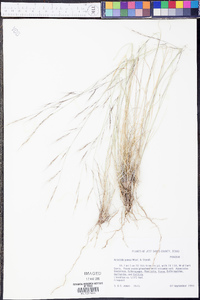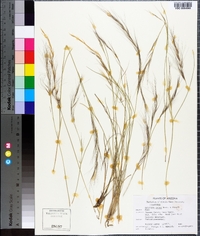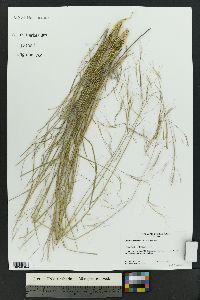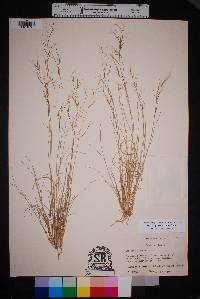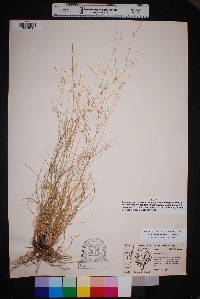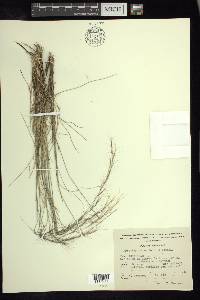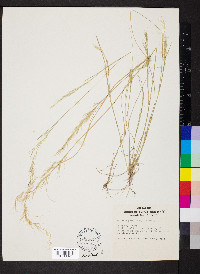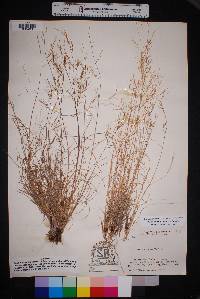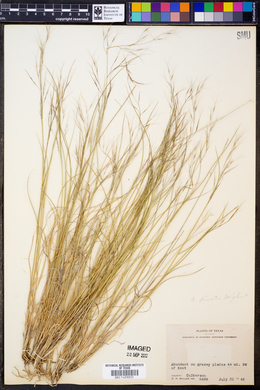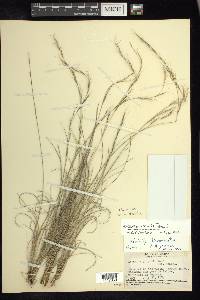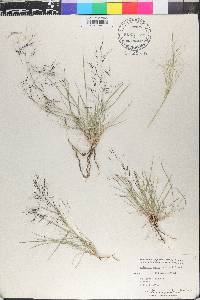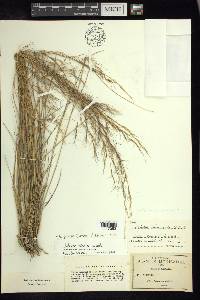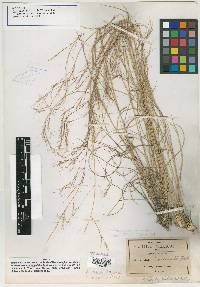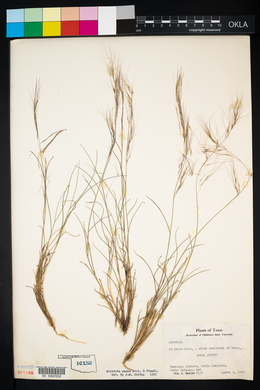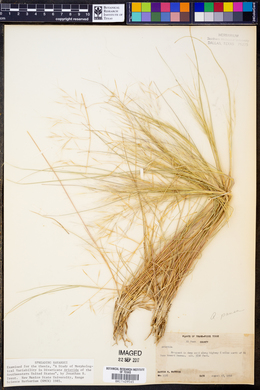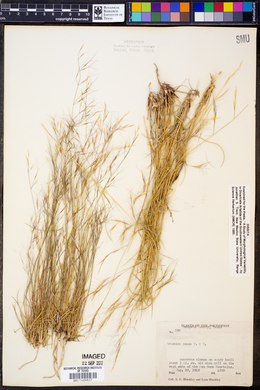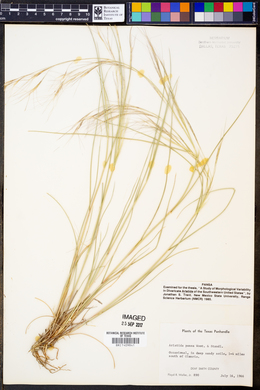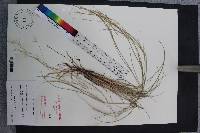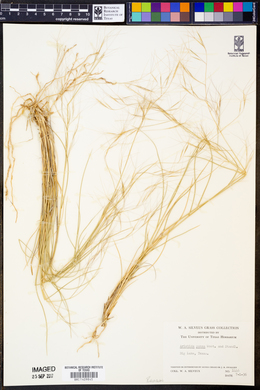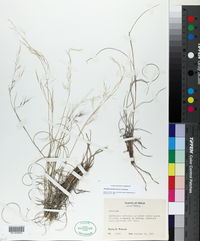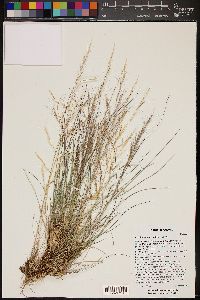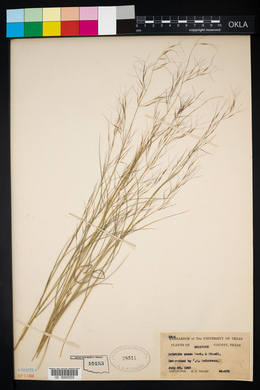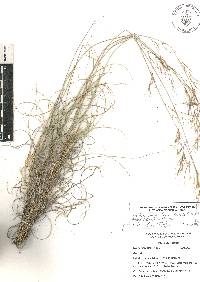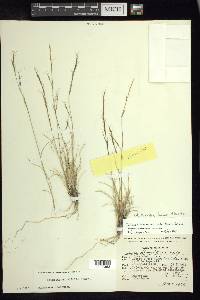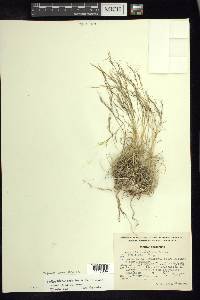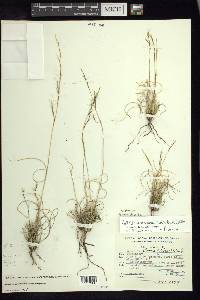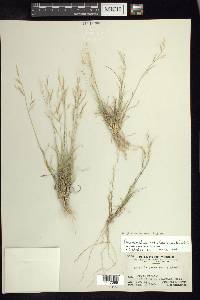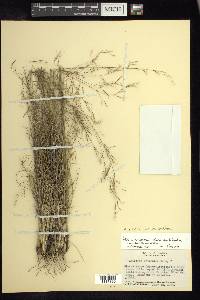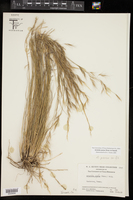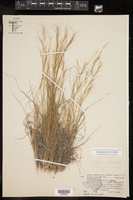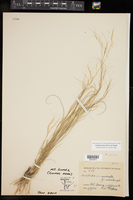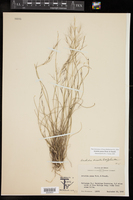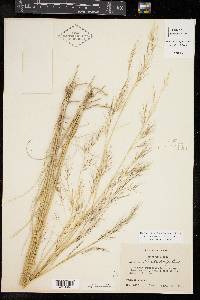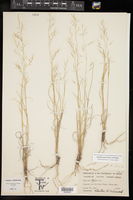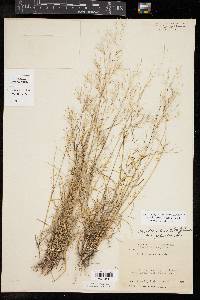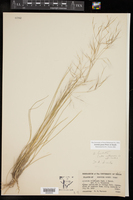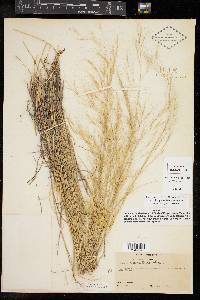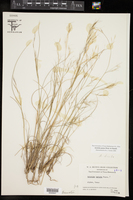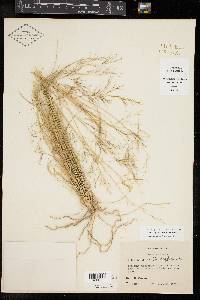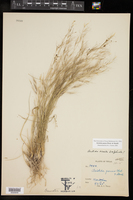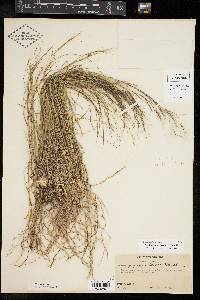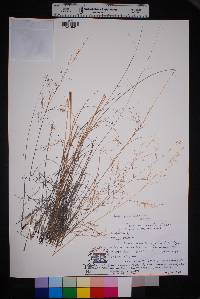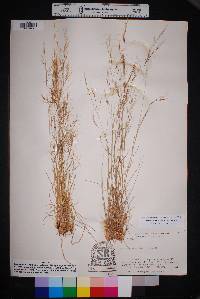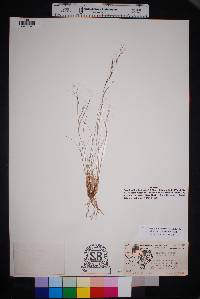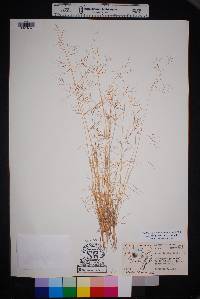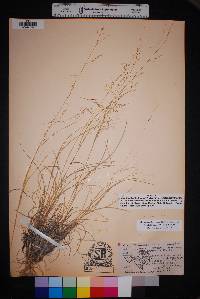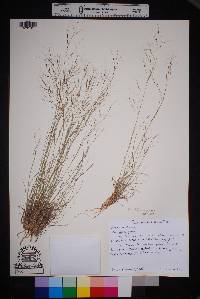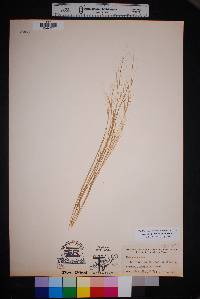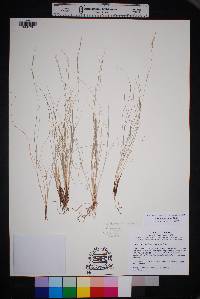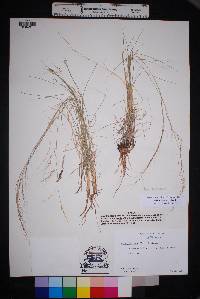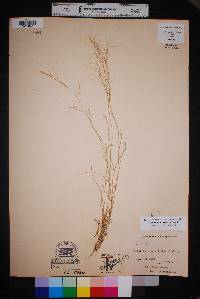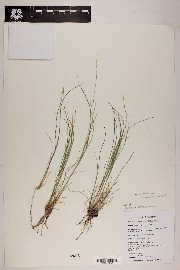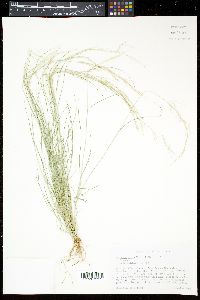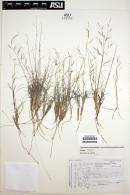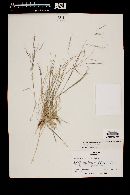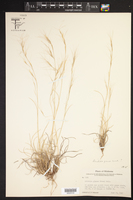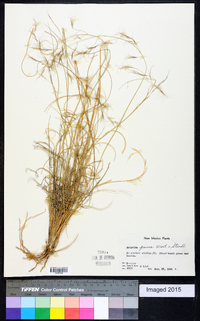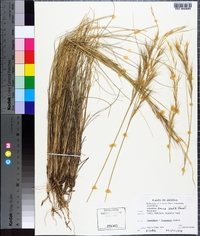Aristida pansa
|
|
|
|
Family: Poaceae
Wooton's Three-Awn, more...Wooton's threeawn, Wooton threeawn
[Aristida dissita I.M. Johnston, moreAristida pansa var. dissita (I.M. Johnston) Beetle, Aristida pansa var. pansa , Aristida tehuacanensis] |
Plants perennial; cespitose. Culms 20-60(75) cm, erect, unbranched. Leaves basal and cauline; sheaths usually longer than the internodes, glabrous except at the summit; collars densely pilose, hairs 1-3 mm, cobwebby and tangled, often deflexed; ligules less than 0.5 mm; blades 4-28 cm long, less than 1 mm wide, usually involute, infrequently flat, usually arcuate, abaxial surfaces glabrous, adaxial surfaces glabrous or puberulent near the base, scabrous or puberulent distally. Inflorescences paniculate, 10-20 cm long, 3-10(12) cm wide; rachis nodes usually glabrous, sometimes with straight, less than 0.3 mm hairs; primary branches 2-11 cm, stiffly ascending to spreading, with axillary pulvini; secondary branches and pedicels with or without pulvini; terminal spikelets often divergent. Spikelets clustered on the distal 1/2 of the branches. Glumes equal or subequal, 1-veined, acuminate or awned, awns to 6 mm, brownish; lower glumes 5-10 mm; upper glumes 6-12 mm; calluses 0.5-1 mm; lemmas 7-13 mm, terminating in an obscure, narrow beak 1-4 mm long, 0.1-0.2 mm wide, junction with the base of the awns not evident; awns 6-15 mm, not disarticulating at maturity, central and lateral awns similar in length and thickness, spreading to horizontal; anthers 3, 1-3 mm, brown. Caryopses 6-8 mm, tan. 2n = unknown. Aristida pansa grows in desert scrub, commonly in the Chihuahuan desert of the southwestern United States and Mexico, but its ecological range extends into the lower juniper zones and its geographic range to southern Mexico. It prefers cobbly to sandy, often gypsiferous soil. It is very similar to the single-awned A. gypsophila, but it has also been confused with A. purpurea var. perplexa, which differs in having reddish glumes of unequal length and longer ascending awns. FNA 2007, Gould 1980 Common Name: Wooton's threeawn Duration: Perennial Nativity: Native Lifeform: Graminoid General: Tufted perennial with stiffly erect stems, 20-40 cm tall; sheath open, rounded, lower coarsely scabrous, margins occasionally ciliolate. Vegetative: Blades involute, occasionally flat, 1 mm wide and up to 15 cm long; collar pubescent to villous, hairs extend in line across collar; ligule ciliate, 0.5 mm long. Inflorescence: Panicles narrow but not densely flowered, 10-20 cm long with stiffly erect-spreading branches, lowermost 4-8 cm long; spikelets appressed near the ends of the branches; glumes unequal, first 5-7 mm long, second 7-10 mm long, lemma as long as or slightly shorter than the second glume, pubescent on the callus, narrowing above to slightly twisted awn column about 2 mm long; awns subequal, mostly 10-20 mm long, central awn occasionally to 25 mm long. Ecology: Found on dry plains, rocky slopes below 5,000 ft (1524 m); flowers July-October. Distribution: AZ, NM. sw TX; south to c MEX. Notes: Distinguished by being a perennial, tufted, erect three-awn with open panicles (closed or condensed in A. purpurea) and un-bent awns equal in length or occasionally subequal (most-often unequal in A. divaricata and especially in A. ternipes). Especially distinct are the wide spreading awns, sometimes to nearly right angles relative to the floret, and the pedicels and spikelets wich diverge from the panicle branches and often have axillary pulvini (small appendages in the axils of branches which keep in open); in A. divaricata and ternipes the spikelets and pedicels are usually appressed. Usually has a noticeable tuft of fine, narrow basal leaves. Ethnobotany: Unknown Etymology: Aristida is from the Latin arista for awn, pansa is from Latin pansus for expanded, stretched open. Synonyms: Aristida dissita, A. pansa var. dissita Editor: SBuckley 2010, FSCoburn 2014, AHazelton 2015 |
|
|
|

